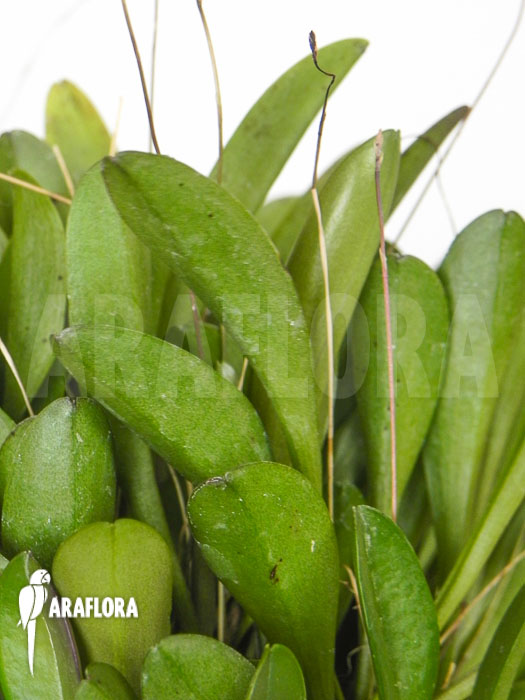Platystele misera - Orchid322
Platystele misera - Orchid322
There is small and smaller. Platystele misera definitely fits into the second category. The flowers are no bigger than half a centimetre, but extremely beautiful. Their tiny size makes them slightly transparent, causing them to sparkle in the right light. The lip has a candy cane pink colour, which is also found in the veins of the petals. Platystele misera is perfect to brighten your terrarium.
Currently not in stock
€ 0,00
Keep me up to date?
Araflora will inform you as soon as the product is available again. Please fill in your e-mail address and we will let you know as soon as the product is back in stock. You will get an e-mail message when the product is available again. Unfortunately we cannot say how long this will be or what the price is likely to be.

Receive an e-mail when new stock of this plant arrives.
Share this plant? Press on one of the following icons.
Platystele misera is found in the mountains of Colombia, Peru and Ecuador. Growing at altitudes between 1.800 and 2.900 meters, it grows upon other plants. The entire plant has a maximum length of 15 centimetre, with its flower stalks almost twice as long as the egg shaped leaves. The flowers of Platystele misera are similar to more conventional orchids, but have a special transparency and colour.



Platystele misera is naturally found in mountainous areas, resulting in an orchid which can handle lower temperatures than others. During the day a temperature of 20⁰C is ideal, dropping to 12⁰C at night. Temperatures below 5⁰C and above 25⁰C can be too much for the orchid. This type needs a lot of light, but should be kept out of direct sunlight at all times, to prevent it from drying out. The humidity of the habitat of Platystele misera should be 80% and slightly more at night. Water with a lot of rainwater or distilled water in the blossoming periods and less in the periods of rest. Proper airflow combined with a proper humidity will help prevent infections and disease. Platystele misera can be kept in a pot with shreds of bark or attached to a piece of bark with moss. You can find this and other components in our ‘Plant Accessories’ section. Fertilize the orchid once every three months. Old flowers can be cut from the plant.








 5 cm
5 cm
 5 cm
5 cm












